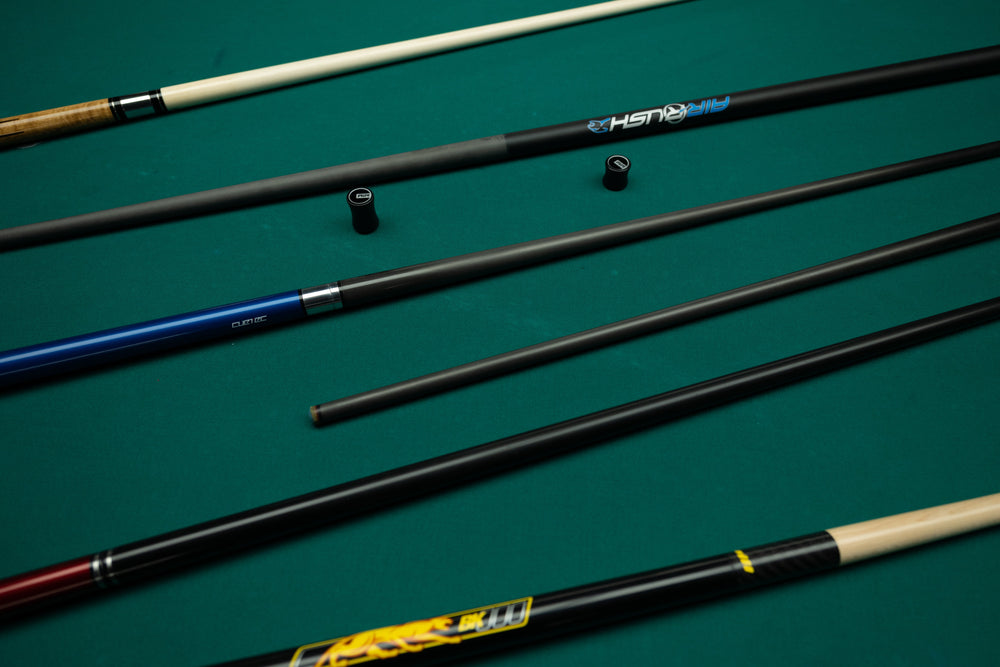Choosing the right pool cue is essential for improving your game, whether you're just getting started or you've been playing for years. With the 2025 lineup of cues, players have access to a range of quality options that cater to different skill levels, preferences, and budgets. This article provides an in-depth look at 2025’s best modern pool cues for beginners and pros alike, examining key features, build quality, and performance standards to help you make an informed decision.
Why Choosing the Right Pool Cue Matters
A pool cue is more than just a tool it's an extension of the player's style and technique. The right cue enhances control, precision, and consistency. For beginners, a well-balanced and forgiving cue can help build fundamental skills. For professionals, minor differences in shaft taper, weight, and tip design can significantly affect gameplay.
Key Elements That Define a Quality Pool Cue
Before diving into specific models, it’s important to understand what makes a pool cue suitable for either a beginner or a seasoned player.
Cue Shaft Material and Construction
Most modern pool cues are made from North American hard rock maple due to its durability and straight grain structure. However, advanced cues now incorporate low-deflection technology, carbon fiber shafts, and vibration-dampening materials to offer better cue ball control.
Cue Weight and Balance
Cue weight typically ranges from 18 to 21 ounces. Beginners often perform better with cues in the 19- to 20-ounce range, while professionals might prefer a lighter or heavier cue depending on the shot style. A well-balanced cue should feel stable and not tip-heavy.
Tip Hardness
Cue tips vary in hardness: soft tips offer more spin control, while hard tips provide more power and are more durable. Layered leather tips are now common in 2025 models for improved consistency and lifespan.
Joint Type and Material
The joint connects the shaft and butt of the cue. Metal joints offer a solid, firm hit, while wood-to-wood joints provide a softer feel. Quick-release joints are also gaining popularity for their convenience.

What to Consider Before Buying a Pool Cue
With a wide selection of pool cues available in 2025, narrowing down your choice involves understanding your own needs and playing style.
Skill Level
Beginners benefit from cues that offer forgiveness on off-center hits, while professionals often look for performance cues that maximize control and response. Knowing where you fall on this scale helps you choose accordingly.
Frequency of Use
If you’re playing several times a week, investing in a durable cue with high-performance features is advisable. Casual players may opt for simpler models that still offer decent playability.
Customization Options
Many brands offer weight bolts, interchangeable shafts, and joint options. These can be helpful if you plan to upgrade your cue over time instead of replacing it entirely.
Maintenance Requirements
Some high-end cues require more frequent maintenance. Wood cues may need to be protected from temperature changes, while carbon fiber cues are more resistant to warping and easier to clean.
Popular Cue Brands to Consider in 2025
The following manufacturers consistently produce quality cues and have models featured among 2025’s best modern pool cues for beginners and pros alike.
- Predator – Known for innovation in low-deflection shafts.
- McDermott – Offers reliable performance across all price ranges.
- Lucasi – Balances design and functionality.
- Viking – Popular for entry-level durability.
- Players – Excellent value cues with surprising features.
Tips for Maintaining Your Pool Cue
Keeping your cue in optimal condition ensures long-term performance. Below are practical maintenance tips:
Clean the Shaft Regularly
Use a dry microfiber cloth or cue cleaner to remove chalk residue and oil buildup. Avoid abrasive materials that can damage the finish.
Store Your Cue Properly
Use a cue case to prevent warping and physical damage. Avoid exposing it to moisture or heat.
Check the Tip and Ferrule
Replace worn-out tips when they lose shape or no longer hold chalk well. Inspect the ferrule for cracks or discoloration.
Tighten the Joint
Ensure the joint is snug but not overtightened. This maintains the cue's straightness and hitting feel.
Final Thoughts
Whether you’re aiming to develop fundamental skills or refine your competitive edge, selecting the right cue is a vital step. The cues featured here represent some of the best options in 2025, designed to suit different playing levels and styles.
Modern cues now combine craftsmanship with performance-enhancing technology, making it easier than ever to find a model that complements your gameplay. Understanding your goals, preferences, and usage patterns will guide you toward the right choice, helping you get the most out of your time at the table.





